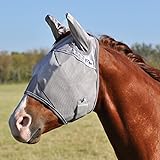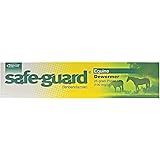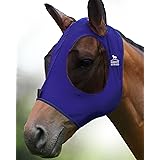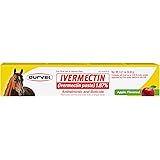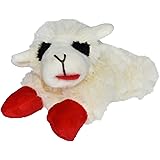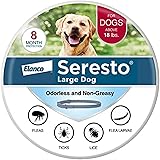Introduction to Pet Myths
Pet myths represent a significant challenge in the realm of animal care and ownership. These misconceptions often arise from outdated information, anecdotal evidence, or cultural beliefs that are passed down through generations. As pet owners and enthusiasts navigate the complexities of pet care, it becomes crucial to discern fact from fiction to ensure the health and well-being of their beloved animals. Many myths are deeply ingrained in societal perceptions, leading people to make decisions about animal care based on incorrect premises.
One of the primary reasons for the persistence of pet myths is the emotional bond between humans and their pets. When people experience love and attachment toward their animals, they may rely on their instincts or community advice rather than factual information. This reliance can foster the acceptance of false beliefs, such as the idea that certain breeds are inherently aggressive or that pets can survive solely on human food. These damaging misconceptions underscore the importance of educating pet owners about accurate pet care practices.
The dissemination of erroneous information can have serious consequences, not only for pets but also for their owners. Misguided beliefs can lead to inadequate nutrition, improper training methods, or even neglect of veterinary care. Therefore, understanding the origin of such myths is essential for any responsible pet owner. By bringing awareness to the facts surrounding pet care, we can help dispel myths that could negatively impact the lives of countless animals.
As we delve deeper into the specifics of prevalent pet myths throughout this blog post, the objective is to equip readers with the necessary information to challenge these misconceptions. Through informed decision-making, pet owners can foster healthier, happier environments for their animal companions.
Myth 1: Dogs Eat Grass When They’re Sick
One of the most persistent myths surrounding canine behavior is the belief that dogs consume grass as a mechanism to induce vomiting or alleviate gastrointestinal discomfort. This notion is widely held among pet owners, who may observe their dogs nibbling on greenery and assume that it is a direct response to feeling unwell. However, recent research challenges this long-standing belief, suggesting that the reasons behind this behavior may be more varied and complex.
Studies indicate that while some dogs indeed may vomit after eating grass, this does not occur consistently enough to conclude that grass consumption is primarily instigated by illness. Most dogs that eat grass do not show signs of distress, nor do they suffer from subsequent vomiting. Instead, the behavior may reflect natural instincts or other environmental factors. For instance, dogs are known scavengers with a tendency to explore their surroundings through taste and smell. Grass, often abundant in their environment, may simply be an item of curiosity.
Additionally, dogs might consume grass out of boredom or as a response to their need for mental stimulation. Owners who find their pets engaging in this behavior are encouraged to assess whether their dogs are receiving sufficient exercise and enrichment. Providing alternative activities or interactive toys can help to mitigate grass-eating habits that stem from boredom.
Moreover, some researchers assert that certain dogs might be inclined to eat grass as part of their ancestral dietary habits. Wild canines often consume various plant materials, and this inclination may persist in domesticated dogs. Given the multitude of factors influencing why dogs eat grass, it is important for pet owners to consider the broader context of their dog’s behavior rather than hastily attributing it to sickness.
Myth 2: Cats Purr Only When They’re Happy
Many pet owners believe that when a cat purrs, it is solely a sign of happiness and contentment. This perception, while partially accurate, overlooks the multifaceted nature of feline communication. Cats use purring as a form of vocalization that serves various emotional states and situations. For instance, research has shown that cats often purr when they are feeling anxious or frightened. In such scenarios, the act of purring can serve as a self-soothing mechanism, helping the animal to calm itself in stressful situations.
Moreover, instances of purring have been documented in cats who are in pain or unwell. While the soothing vibrations of purring may provide comfort, it may also indicate that the animal is experiencing discomfort and is attempting to express it or gain attention from its owner. This complexity illustrates that purring is not solely synonymous with happiness but can denote a spectrum of feelings—from stress to pain relief.
Understanding this nuanced communication can be vital for cat owners. By recognizing that their pet may purr for reasons other than joy, owners can be more attuned to their cat’s needs. It is essential to observe the context of the purring. If a cat is purring in a situation involving unfamiliar people or loud noises, it might indicate fear rather than pleasure. Similarly, if a previously active cat starts purring frequently while displaying lethargy, it may signal that a trip to the veterinarian is necessary.
In conclusion, the interpretation of a cat’s purring should be approached with a more comprehensive understanding. This behavior is not solely linked to happiness but serves multiple communicative purposes, highlighting the complexity of feline emotions and needs.
Myth 3: All Dogs are Natural Swimmers
The common belief that all dogs are instinctively excellent swimmers is a widespread misconception. While many breeds exhibit an innate affinity for water, this does not universally apply to all dogs. It’s essential to recognize that various factors influence a dog’s swimming ability, including breed, body structure, and personal comfort in water.
For instance, breeds such as Labrador Retrievers, Portuguese Water Dogs, and Newfoundlands are naturally predisposed to swimming due to their anatomical features and historical roles as water retrievers. Their webbed feet and strong, muscular bodies enable them to navigate through water efficiently. However, not all breeds share these physical traits. Smaller dogs or those with shorter legs, like Dachshunds or Bulldogs, may struggle to keep their heads above water, making them less suited for swimming. Additionally, some dogs have a lack of exposure to water from an early age, leading to fears or anxiety when faced with swimming environments.
Given these variances, pet owners should approach water activities with caution. It’s crucial to supervise all dogs when they are around water, regardless of their breed. Even dogs that are considered skilled swimmers can encounter unexpected dangers in aquatic settings, such as strong currents or sudden underwater obstacles. To ensure safety, life vests designed for pets can be an appropriate precaution for any dog participating in water activities, particularly for those that are weaker swimmers.
Moreover, a gradual introduction to water in a controlled environment can help build a dog’s confidence, reducing their anxiety around swimming. Assessing your dog’s individual capabilities and comfort level is vital for a positive and safe experience. Overall, while many dogs may enjoy swimming, it is inaccurate to generalize this ability across all breeds.
Myth 4: Indoor Cats Don’t Need Vaccines
It is a common misconception among pet owners that indoor cats are completely safe from infectious diseases and therefore do not require vaccinations. While it is true that indoor cats face a lower risk of exposure to certain pathogens compared to their outdoor counterparts, they are not immune to a range of infectious diseases. Vaccinations play a critical role in protecting these pets, ensuring their health and well-being throughout their lives.
Indoor cats can still be susceptible to diseases that can be introduced through various routes. For instance, these cats may encounter pathogens through external elements, such as on shoes, clothing, or even through open windows and doors. Certain viral illnesses, including feline viral rhinotracheitis and calicivirus, can be contracted from exposure to other cats, even if direct contact does not occur. Additionally, unvaccinated cats are at risk if a new pet is introduced into the household, which underscores the importance of maintaining up-to-date vaccinations.
Regular veterinary check-ups and vaccinations are essential for all cats, regardless of whether they live indoors or outdoors. Vaccinations not only protect against common diseases but also help in controlling the spread of infections within the feline population. Furthermore, routine veterinary visits allow for early detection of health issues, including those that could lead to severe complications if left untreated. Therefore, indoor cats should follow a veterinary-recommended vaccination schedule to ensure they remain protected throughout their lives.
Ultimately, while indoor living does reduce exposure to certain risks, it does not eliminate them entirely. By prioritizing vaccinations and regular veterinary care, cat owners can provide their indoor companions with the protection they need to thrive and remain healthy.
Myth 5: A Wagging Tail Means a Happy Dog
One of the most pervasive myths surrounding canine behavior is the belief that a wagging tail universally indicates a happy dog. While tail wagging can indeed be a sign of joy, it is not a definitive signal of happiness across all situations. The nuances of a dog’s body language and the context in which tail wagging occurs are vital elements to consider when interpreting this behavior. Various factors, such as the dog’s posture, facial expressions, and surrounding stimuli, play significant roles in determining the true emotional state of the animal.
A wagging tail may manifest in different ways, often indicating a range of emotions that could include excitement, anxiety, or even aggression. For instance, a broad, relaxed wagging tail held in a horizontal position typically signifies happiness and comfort. Conversely, a tail that is held high and wagging stiffly may indicate a more aggressive state, suggesting that the dog could be challenging or defending its territory. Additionally, a low-positioned tail that wags slowly could mean the dog is feeling anxious or submissive rather than joyful.
Understanding dog body language is crucial for pet owners and animal enthusiasts alike. Recognizing the broader context of a dog’s behavior enables humans to respond appropriately to their needs and feelings. For example, if a dog approaches with a wagging tail but displays other signs of unease, such as raised hackles or a tense body posture, it may be necessary to give the dog space or approach with caution. By educating ourselves about the subtleties of tail wagging and overall canine communication, we equip ourselves to foster safer and more harmonious interactions with dogs.
Myth 6: Pets Eat Grass to Purge Hairballs
The belief that pets, particularly cats, consume grass predominantly to vomit hairballs is a common myth. Many pet owners have observed their furry companions nibbling on blades of grass and often assume the behavior is linked to extracting unwanted fur. However, the reality is more nuanced. Grass eating behavior in pets can emerge from a variety of motivations that do not revolve solely around purging hairballs.
Research suggests that one possible reason dogs and cats may indulge in grass is due to its high fiber content. This plant material can aid in digestion and help move food through the gastrointestinal tract, which may alleviate occasional gastrointestinal discomfort. While consuming grass can lead to vomiting in some pets, this is not a guaranteed or primary effect. In fact, many pets may simply enjoy the texture and taste of grass or may chew on it out of sheer curiosity.
Furthermore, evidence points toward psychological factors that could contribute to grass-eating behavior. Boredom, anxiety, or an innate tendency to forage can lead pets to find and consume grass, rendering the notion that it’s strictly for hairball removal quite simplistic. Pet owners should consider that while hairballs are a concern in cats, their occurrence is more often linked to grooming habits and less about grass consumption. Both cats and dogs handle hairballs through regular grooming and beneficial dietary adjustments.
In conclusion, while grass consumption may sometimes result in vomiting hairballs, it is overly reductive to say it is the primary motivation behind this behavior. Understanding the diverse reasons pets engage in this activity can help owners better address their companions’ dietary and emotional needs, ensuring a healthy and happy pet lifestyle.
Myth 7: Cats Always Land on Their Feet
The belief that cats always land on their feet stems from their innate righting reflex, which allows them to twist their bodies in mid-air to land upright when they fall. This remarkable ability, developed over thousands of years of evolution, contributes to their reputation for grace and agility. However, while it is true that cats possess this reflex, it does not guarantee their safety in every fall. The myth oversimplifies a complex physiological response and neglects the potential consequences of falls from significant heights.
Research indicates that the righting reflex typically develops in kittens around three to four weeks of age. Upon falling, a cat is able to orient itself, using its vision and inner ear to assess its position and correct its body alignment. Yet, this ability can be influenced by various factors, such as the height of the fall and the cat’s physical condition. Falling from a great distance can lead to severe injuries, including broken bones and internal trauma, even in agile feline athletes.
Interestingly, a study conducted on cats that fell from tall buildings revealed counterintuitive results. Those that fell from lower heights, below seven stories, were more likely to experience serious injuries compared to those who fell from greater heights. This phenomenon is attributed to the ability of cats to adjust their bodies while falling but also suggests that a harmful impact can occur. Consequently, the myth that cats always land on their feet could mislead pet owners into thinking their pets are invulnerable to falls.
In light of this information, understanding the realities of a cat’s righting reflex is crucial. This myth can create a false sense of security, leading to potentially dangerous environments for feline companions. Pet owners should take care to ensure their homes are free from hazards, especially in high places, even as they appreciate the remarkable abilities of their beloved cats.
Myth 8: You Can’t Train Cats
The common perception that cats are untrainable creatures is perhaps one of the most pervasive myths in pet care. Contrary to this belief, felines possess cognitive abilities that allow them to learn and adapt, much like their canine counterparts. Understanding how a cat learns is crucial in effectively training them. Training cats involves patience, consistency, and a keen awareness of their unique behaviors and preferences.
One effective method for training cats is through positive reinforcement techniques. This approach involves rewarding desirable behaviors with treats, affection, or playtime, thus encouraging the cat to repeat those behaviors. For instance, training a cat to use a litter box or scratch on a designated post can be accomplished by rewarding them when they engage in these desired actions. Over time, the cat associates the behavior with a positive outcome, reinforcing the learning process.
Clicker training is another popular technique utilized by cat owners. This method employs a handheld clicker to mark desired behaviors followed immediately by a reward. The sound of the clicker helps the cat understand which behavior is being praised. Clicker training can be effectively used to teach various commands, such as “sit” or “high-five,” and can also facilitate the introduction of new tricks that showcase a cat’s intelligence and approachability. Moreover, short training sessions are recommended, as cats can become easily distracted, and maintaining their focus can be challenging.
Additionally, training can also help alleviate behavioral issues, such as scratching or aggression. By directing a cat’s energy into learning activities, owners can encourage positive interactions and strengthen the bond they share with their pets. It is important to remember that each cat has its personality, and adaptability is essential to any training regimen. Cats are trainable companions, and with the right approach, pet owners can foster a more harmonious and engaging relationship with their pets.
Myth 9: Grain-Free Diets are Best for Pets
The rising trend of grain-free diets for pets has gained significant traction in recent years, often fueled by the idea that grains, such as wheat or corn, are inherently harmful to animals. However, this notion warrants a more thorough examination, as the nutritional needs of pets are diverse and complex. While some pets may benefit from grain-free options, especially those with specific allergies or sensitivities, it is essential to recognize that grains can also play a valuable role in a well-balanced diet.
Grain-free foods often contain alternative carbohydrate sources, such as potatoes and legumes. While these may be seen as healthier options, they can lead to an unbalanced nutrient profile if not carefully formulated. It is crucial to ensure that any dietary changes meet the specific nutritional requirements of each pet. A dog’s or cat’s diet should be based on their age, weight, health status, and activity level. Grain-inclusive diets are not automatically detrimental and can provide essential nutrients and fiber that contribute to overall health when coupled with high-quality proteins and fats.
Moreover, studies have indicated potential health problems associated with prolonged feeding of grain-free diets, particularly concerning heart health. Some grain-free formulations have been linked to a rising number of cases of canine dilated cardiomyopathy (DCM), a serious heart condition. Although a definitive link between grain-free diets and DCM has yet to be established, the emerging evidence has caused concern among veterinarians and pet owners alike.
Ultimately, it is crucial to consult with a veterinarian before making any significant dietary changes for pets. The best diet will vary among individual animals and should be tailored to their unique health needs and lifestyle. A one-size-fits-all approach, such as adopting grain-free diets for all pets, is not necessarily the optimal solution.
Myth 10: Neutering Leads to Behavioral Changes
The notion that neutering fundamentally alters a pet’s personality or behavior is a common misconception. Many pet owners believe that spaying or neutering will result in a drastic change in their animal’s temperament. However, it is crucial to differentiate between behaviors that stem from an animal’s natural instincts and those that are influenced by hormones. Neutering primarily affects hormone levels, which can lead to reduced behaviors associated with mating instincts, such as roaming or aggression. These changes, however, do not equate to a complete change in personality.
Studies indicate that pets often retain their essential characteristics post-neutering, with the primary differences being related to reproductive behaviors. For example, a dog that was previously territorial or aggressive may exhibit reduced aggression following neutering, not because its fundamental nature has changed, but because the hormonal triggers for such behavior have been minimized. Additionally, neutered pets may be less prone to engage in behaviors that lead to injuries or accidents, making them more stable companions.
Moreover, responsible spaying and neutering should be part of a comprehensive strategy for pet care, including training and socialization. A well-trained pet, whether neutered or not, can develop positive behaviors through consistent reinforcement and proper guidance. It is essential for pet owners to focus on a holistic approach to companionship; this includes obedience training, socialization with other animals, and providing stimulating environments that cater to the pet’s needs.
Ultimately, educating pet owners about the realities of neutering can dispel these myths. Neutering is a responsible decision that contributes to the overall well-being of pets and helps prevent overpopulation, while still retaining their unique behavioral traits. Understanding this can enable owners to make informed choices for their pets’ health and happiness.
Myth 11: You Only Need to Bathe Your Dog Once a Year
Many dog owners may believe that bathing their pets only once a year is sufficient for maintaining hygiene and overall health. However, this myth is misleading and does not consider crucial factors such as breed, coat type, and activity level. Different dog breeds exhibit varying needs when it comes to grooming and bathing. For instance, dogs with long or thick coats, such as Golden Retrievers or Siberian Huskies, require more frequent baths to avoid matting and to keep their coats healthy. Conversely, short-haired breeds like Beagles may need baths less frequently but still benefit from regular grooming.
The coat type significantly impacts how often a dog should be bathed. Dogs with oily skin, like Basset Hounds, may need more regular baths as their natural oils build up and can lead to unpleasant odors. Similarly, dogs that are active or spend significant time outdoors will require more frequent cleaning due to dirt, mud, and allergens accumulating on their coats. For instance, a dog that enjoys running through the woods will likely need a bath following such adventures, regardless of its breed.
It is also essential to consider the dog’s skin health. Overbathing can lead to dryness and irritation, while infrequent baths can contribute to skin issues and an unpleasant odor. The ideal frequency for bathing can range from once a week for some breeds to once every few months for others, depending on the factors mentioned. Therefore, it is crucial for dog owners to assess their pet’s individual needs rather than adhering to a one-size-fits-all routine. Ultimately, understanding these nuances can help maintain your dog’s health and well-being effectively.
Myth 12: Pets Don’t Need Dental Care
One prevalent myth among pet owners is the belief that dental care is unnecessary for pets. This misconception can lead to a range of serious health issues that go beyond poor oral hygiene. In reality, just like humans, pets also require diligent dental care to maintain their overall health and well-being. Neglecting dental hygiene can result in periodontal disease, which is the leading cause of tooth loss in pets.
Regular dental check-ups with a veterinarian are crucial for determining the oral health status of your pet. These assessments may include professional cleanings, examinations for any signs of periodontal disease, and assessments for potential oral tumors. Furthermore, oral diseases can lead to systemic health issues; bacteria from the mouth can enter the bloodstream, affecting the heart, liver, and kidney functions. Thus, maintaining proper oral hygiene is not merely a matter of fresh breath.
Pet owners should also incorporate daily dental care routines at home. This can be achieved through practices such as regular brushing of the pet’s teeth and offering dental treats or toys designed to promote oral health. These preventive measures can significantly reduce the likelihood of developing serious dental conditions.
Additionally, some signs that dental care is needed include bad breath, bleeding gums, loose teeth, or changes in eating habits. Addressing these symptoms promptly by consulting a veterinarian is essential. In conclusion, the myth that pets do not need dental care is not only misleading but potentially harmful. By prioritizing dental hygiene through regular vet visits and at-home care, pet owners can ensure their furry companions lead longer, healthier lives.
Myth 13: You Can’t Teach an Old Dog New Tricks
The adage “you can’t teach an old dog new tricks” has persisted through generations, leading many to believe that an older dog’s capacity for learning diminishes with age. However, scientific research contradicts this notion, indicating that senior dogs can indeed learn new commands and behaviors. Cognitive flexibility, or the ability to adapt to new information, can remain intact into an older age, allowing dogs to acquire new skills.
Studies have shown that while older dogs may initially take longer to grasp new commands compared to their younger counterparts, they are not incapable of learning. The learning process for senior dogs often requires patience, consistency, and the use of appropriate training methods. Positive reinforcement techniques—rewarding desired behaviors with treats or praise—can be highly effective for dogs of all ages. This method not only promotes learning but also helps strengthen the bond between the dog and its owner.
Moreover, engaging older dogs in training can provide significant cognitive stimulation, which is beneficial for their mental health. Just as human brains benefit from lifelong learning, so do our canine companions. Regular training sessions can keep their minds sharp and active, potentially mitigating some age-related cognitive decline. It is crucial to approach training with empathy, understanding that older dogs may have physical limitations or conditions that could affect their learning pace.
In conclusion, the myth that older dogs cannot learn new tricks perpetuates an unjust stereotype that undermines their capabilities. With the right approach, encouragement, and training methods, older dogs can successfully acquire new skills, enhancing not only their quality of life but also providing their owners with a fulfilling training experience. Embracing this truth can foster a more inclusive understanding of canine learning and behavior, regardless of the dog’s age.
Myth 14: Cats Are Solitary Creatures
The belief that cats are intrinsically solitary animals is a prevalent misconception that does not align with the actual social behaviors exhibited by many domestic cats. While it is true that some felines may appear aloof or independent, there is a growing body of evidence that suggests cats are more sociable than previously thought. In fact, many cats thrive in social environments, interacting with both humans and other animals.
Feline social behavior can vary significantly from one individual to another. Some cats enjoy engaging in play and bonding activities with their owners, while others may seek companionship from fellow cats. This sociability can be seen in multi-cat households where cats form intricate social bonds, often grooming each other, playing, and sleeping together. Such behaviors indicate a level of social complexity that contradicts the notion of cats being strictly solitary.
<pmoreover, an=”” and=”” array=”” as=”” behavior.=”” behaviors=”” body=”” capacity=”” cats,=”” certain=”” cooperative=”” cues,=”” display=”” dogs,=”” domestic=”” exemplifies=”” felines=”” for=”” in=”” including=”” independent=”” indicate=”” interaction.=”” interactions.<pas a=”” acknowledging=”” adequate=”” and=”” are=”” benefit=”” can=”” cat=”” cats=”” companionship.=”” complex=”” debunking=”” each=”” enhance=”” enriching=”” ensuring=”” environment=”” essential=”” for=”” from=”” has=”” help=”” inform=”” insight=”” interaction.=”” is=”” it=”” its=”” many=”” more=”” myth=”” nature=”” needs.=”” of=”” our=”” owners,=”” ownership,=”” p=”” pet=”” preferences=”” promotes=”” receive=”” responsible=”” social=”” socialization=”” solely=”” solitary=”” temperament,=”” that=”” the=”” their=”” therefore,=”” this=”” to=”” understand=”” understanding=”” unique=”” well-being.
Myth 15: Bones are Safe for Dogs to Chew
The belief that bones are safe for dogs to chew is a common myth that can lead to severe health risks. While many pet owners perceive bones as a natural and entertaining chew toy, it is essential to understand the potential dangers associated with this practice. Various types of bones, particularly cooked ones, can splinter easily. When a dog chews on these bones, sharp fragments can form that pose a significant risk of tooth fractures and oral injuries.
Moreover, the ingestion of bone fragments can lead to more serious complications such as intestinal blockage. If these pieces become lodged in the gastrointestinal tract, they can cause pain, vomiting, or even require surgical intervention to remove them. The risk escalates when dogs are left unattended while chewing on bones, increasing the likelihood of accidents and injuries.
There are numerous safe alternatives available that can satisfy a dog’s natural chewing instincts without posing such significant health hazards. For instance, rubber chew toys are often designed to withstand heavy chewing and can be an enjoyable option for dogs. Additionally, certain dental chews are formulated to promote oral health and can be beneficial for maintaining healthy teeth and gums. These alternatives not only provide the necessary stimulation for chewing but also keep your pet safe from the risks associated with bone chewing.
It is crucial for pet owners to be informed about the potential dangers of giving bones to dogs. By opting for safer alternatives, owners can provide their pets with enjoyable chewing experiences while ensuring their overall well-being. In conclusion, prioritizing your dog’s safety should always take precedence over the tradition of providing bones for chewing, considering the potential risks involved.
Myth 16: Pet Hair Causes Allergies
The common belief that pet hair is the primary trigger for allergies is indeed a misconception. Many individuals assume that furry pets are the sole contributors to allergic reactions, but this notion oversimplifies the underlying biological mechanisms. In reality, it is not the pet hair itself that causes allergies; instead, the proteins found in pet dander, saliva, and urine are the real culprits responsible for inducing allergic reactions.
Pet dander, which is composed of tiny skin flakes shed by animals, contains these proteins that can easily become airborne and persist in the environment. When inhaled or contacted by allergic individuals, these proteins may provoke an immune response, resulting in symptoms such as sneezing, itchy eyes, or skin irritations. Saliva from pets, particularly when they groom themselves, can also become airborne, further contributing to the spread of these allergens. Therefore, the hair that clings to furniture or clothing serves primarily as a medium for these proteins, rather than a primary allergenic source.
Moreover, the severity of allergic reactions varies considerably among individuals. Some may be particularly sensitive to a specific type of pet, while others may have a more generalized response. Hence, pet owners need to understand that not all animals or breeds produce the same levels of dander or allergenic proteins. Regular grooming and cleaning can help minimize airborne allergens and reduce overall exposure. Air purifiers and other allergy mitigation strategies can also be beneficial for families with allergic members.
In essence, while pet hair can be associated with allergies, it is critical to recognize the actual allergens responsible for triggering these reactions, which include proteins from pet dander, saliva, and urine. Understanding this distinction can lead to more effective management strategies and an improved quality of life for both pet owners and those with sensitivities.
Myth 17: All Pets Need the Same Amount of Exercise
The notion that all pets require the same level of exercise is a common misconception that can lead to inadequate care and health issues in animals. In reality, the exercise needs of pets vary significantly based on various factors, including species, breed, age, and health status. It is essential for pet owners to understand these nuances to ensure their beloved companions remain healthy and happy.
Different species have inherently different exercise requirements. For example, dogs are generally more active than cats and require varying amounts of physical activity based on their breed. High-energy breeds such as Border Collies and Labradors may thrive on intensive exercise routines, including running and fetch, while smaller or more sedentary breeds like Bulldogs or Shih Tzus may benefit from moderate walks and playtime. Failing to tailor exercise to a dog’s specific needs can result in behavioral problems and obesity.
Age is another critical factor that influences a pet’s exercise requirements. Puppies and young animals generally have higher energy levels and require more frequent, vigorous activity to expend that energy healthily. On the other end of the spectrum, senior pets may need less intense exercise due to potential health issues such as arthritis or decreased stamina. It is vital for owners to adapt their exercise routines as their pets age.
Finally, a pet’s health condition can dramatically impact its exercise levels. Animals with chronic illnesses or injuries may require restricted activity or tailored exercise plans that accommodate their limitations. Always consult with a veterinarian to develop an appropriate regimen that aligns with your pet’s health status, fostering their well-being and longevity.
In conclusion, recognizing that not all pets share the same exercise needs is crucial for responsible pet ownership. Individualized exercise plans foster healthier, happier pets and allow them to thrive in their home environments.
Addressing the Stigma Surrounding Shelter Pets
There exists a common misconception that adopting pets from shelters is a risky endeavor, often rooted in the belief that these animals are somehow defective or problematic. However, this belief undermines the value of shelter animals and ignores the profound benefits that come with adopting a pet from these facilities. Contrary to popular myth, many animals in shelters are there due to circumstances beyond their control, such as changes in owners’ lifestyles, financial constraints, or the loss of a home. This does not imply that they possess behavioral issues or poor health.
In reality, many shelter pets are loving and loyal companions waiting for a chance to thrive in a nurturing environment. A significant percentage of these animals have already undergone a thorough assessment by shelter professionals, who often provide valuable information regarding their temperament and compatibility with potential adopters. Such evaluations allow future pet owners to find a pet that fits their needs and lifestyle, making the adoption experience more successful. Furthermore, many shelters conduct necessary health check-ups and vaccinations before placing animals in new homes, ensuring that they are healthy and ready to integrate into a family.
When considering pet adoption, it is crucial to recognize that these animals have the potential to enrich lives just as much as those obtained from breeders or pet stores. Instead of harboring fears about behavior and health, prospective owners should take the time to research and understand the benefits of adopting from a shelter. Responsible adoption fosters the ethics of pet ownership while simultaneously addressing the growing issue of animal homelessness. By embracing the idea of giving these animals a second chance, individuals can contribute to a rescue’s mission and bring joy and companionship into their lives.
Myth 19: Spaying or Neutering Will Make Your Pet Overweight
The belief that spaying or neutering pets causes them to become overweight is a widespread misconception among pet owners. While it is true that some pets may experience changes in their body composition after these surgical procedures, the primary factors contributing to weight gain are diet and lifestyle rather than the act of spaying or neutering itself.
Following spaying or neutering, pets may experience alterations in hormonal levels, which can affect their metabolism and energy levels. However, these changes do not mean that a pet will automatically gain weight. Instead, it is essential for pet owners to adjust their pets’ diets and exercise routines accordingly to maintain a healthy weight. Anoverabundance of calories combined with insufficient physical activity can lead to weight gain in any pet, regardless of their reproductive status.
In managing a pet’s weight, owners should focus on providing a well-balanced diet that meets their pets’ specific nutritional needs. Portion control can be a critical aspect of this process, as overfeeding is a primary contributor to obesity in pets. Additionally, engaging pets in regular exercise—such as walks, playtime, and other stimulating activities—can help prevent unwanted weight gain and promote overall health.
It is also worthwhile to mention that spaying or neutering pets can have several health benefits beyond weight management. These procedures can reduce the risk of certain cancers and eliminate behavioral issues related to mating. In light of this, prospective pet owners should not shy away from these medical interventions due to the fear of weight gain but instead focus on implementing proper care and lifestyle modifications to ensure their pets remain fit and healthy.
Conclusion: Fact-Checking Pet Care
In the realm of pet care, discerning fact from fiction is of paramount importance. Throughout this blog post, we have explored various myths surrounding pet ownership, highlighting how misinformation can lead to misplaced beliefs about animal care. As we have demonstrated, misconceptions such as the necessity of certain foods, the effectiveness of specific training methods, and the general behavior of pets can significantly impact the health and well-being of our furry companions.
One of the essential takeaways is the need for pet owners to rely on credible sources when seeking information related to their pets. With the abundance of resources available online and in print, it is crucial to differentiate between anecdotal evidence and scientifically-backed advice. Trusted organizations, academic research, and licensed veterinarians can provide valuable insights that can guide owners in making informed decisions.
Moreover, as discussed, many widespread beliefs may not align with contemporary veterinary science. An example is the common idea that all human food is suitable for pets. This misconception can lead to health complications for pets, underlining the necessity of consulting with professionals regarding appropriate diets and behavioral training techniques.
By actively seeking reliable information and verifying the claims made regarding pet care, owners can foster a healthier and happier environment for their animals. In an era where misinformation can spread rapidly, pet owners must engage in diligent fact-checking to ensure they are providing the best possible care for their pets. Ultimately, a commitment to continuous learning about pet care not only enriches the lives of pets but also strengthens the bond between owners and their beloved animals.










































































































